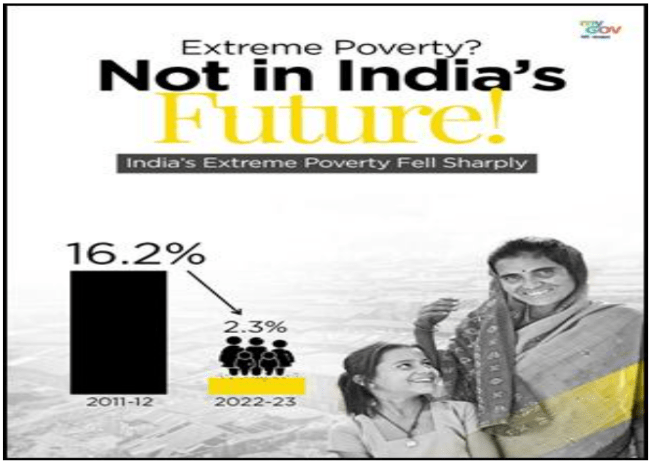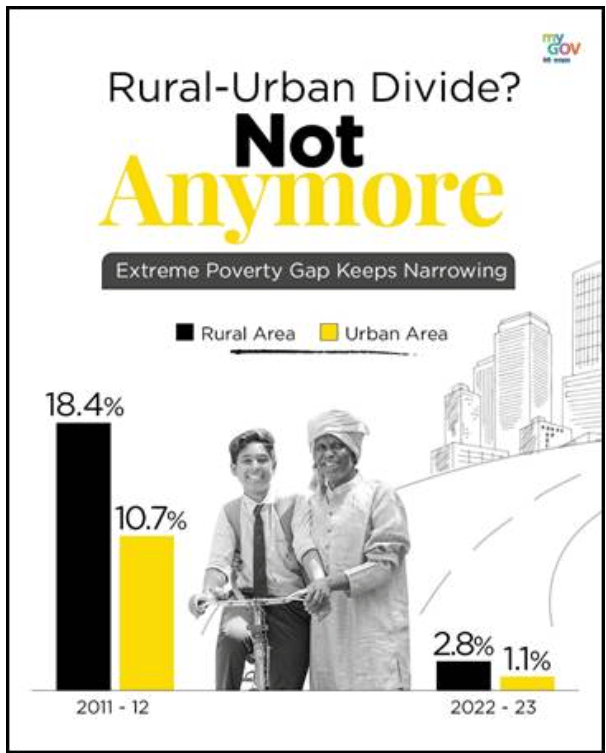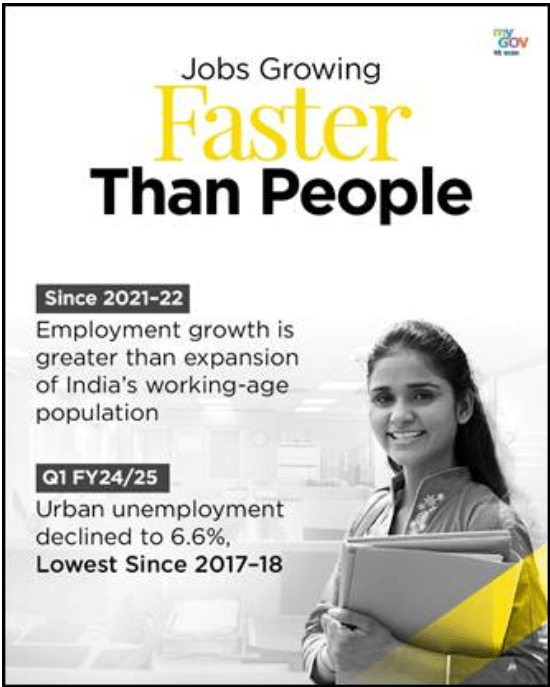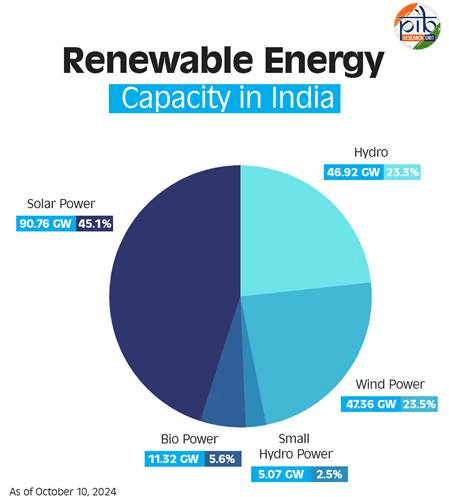Daily Current Affairs - 28th April 2025
Rodrik’s Political Trilemma
When we observe the turbulence in the Western world today — from America’s polarised politics to Europe’s rising far-right movements — we are not simply witnessing bad election cycles or temporary leadership failures. What we are seeing is a deeper, structural crisis — a crisis born from the very assumptions that powered the global order after World War II.
Rodrik’s Political Trilemma: Understanding the Tension
In the year 2000, Harvard economist Dani Rodrik framed this crisis in a sharp, almost prophetic way.
He proposed a simple but powerful insight:
A nation can achieve any two of the following three goals, but never all three together:
- National Sovereignty
- Democratic Politics
- Deep Economic Globalisation
In other words, no matter how strong a nation is, it must choose which price it is willing to pay.
Greed to have all three leads to instability — exactly what we are witnessing today.
The Trilemma in Action: Real-World Examples
1) European Union: Democracy + Globalisation, Sovereignty Sacrificed
- The European Union (EU) represents one of the boldest experiments in shared prosperity — a common currency, open borders, integrated markets.
- While this delivered economic gains, it came at the cost of national sovereignty. Many Europeans felt governed not by elected leaders, but by distant, unaccountable bureaucrats in Brussels.
- This resentment simmered beneath the surface, eventually fuelling phenomena like Brexitand the meteoric rise of far-right movements across Europe.
2) Technocratic Governance: Sovereignty + Globalisation, Democracy Eroded
- In the developing world, the equation flipped. Countries, desperate for global capital, surrendered policy control to institutions like the IMF and World Bank.
- This led to a dangerous trend: technocrats, not elected leaders, began setting national policies.
- The backlash in Kenya against IMF-mandated austerity is a case in point — a reminder that when democracy becomes hollow, stability itself becomes fragile.
3) Bretton Woods Compromise: Democracy + Sovereignty, Globalisation Restrained
- Some nations — notably India, China, and the East Asian Tigers — chose a different path: selective engagementwith the global economy.
They opened up cautiously, protected domestic industries, and refused to surrender full policy control. - This strategy delivered spectacular growth. But it also exposed the fine line: when protecting sovereignty turns into controlling information and restricting freedoms (as seen in China), the spirit of democracy itself is endangered.
The Western Crisis: Dreams Collapsing Under Reality
The Western model believed it could beat the trilemma: that it could enjoy global free markets, sovereign policymaking, and vibrant democracy — all at once.
But reality intervened:
- Jobs vanishedto cheaper labour markets abroad.
- Trust in democratic institutionseroded as inequalities deepened.
- Populism rose, offering nostalgic dreams of ‘taking back control’ — a siren song for disillusioned citizens.
Thus, leaders like Trump, Wilders, and Orbán did not create the anger; they merely rode waves that had been gathering for decades.
Lessons for India: Walking a Narrow Path: India today stands at a historic crossroad. Our challenge is not just economic growth, but ensuring that growth does not come at the cost of our democracy or our sovereignty.
Key lessons:
- Strengthen Domestic Institutions:Our regulatory bodies, judiciary, and election commissions must be shielded from partisan capture. Weak institutions guarantee future instability.
- Promote Inclusive Growth:A democracy riddled with mass unemployment and rising inequality will eventually turn against itself. Welfare must be smart, targeted, and dignity-enhancing.
- Practice Balanced Globalisation:Engage with the world — but with eyes open. We must invite foreign capital, yes, but not allow it to dictate terms that hollow out national interests.
Conclusion: Wisdom Lies in Choosing Carefully
Rodrik’s trilemma is not just a theory; it is a warning. It reminds us of an ancient truth: You cannot have everything at once. Wise governance is about balancing ideals, sacrificing some ambitions to preserve others more vital.
World Bank Overview on Poverty and Equity in India
India has made remarkable progress in poverty reduction over the last decade, as highlighted in the World Bank’s Spring 2025 Poverty and Equity Brief. The report emphasizes the country’s success in reducing extreme poverty, closing rural-urban disparities, and addressing multidimensional poverty.
Poverty Reduction:
- Extreme Poverty Decline:The proportion of individuals living on less than $2.15 per day (PPP) dropped from 16.2% in 2011–12 to 2.3% in 2022–23, lifting around 171 million people above the global poverty line.

- Rural-Urban Disparity:Rural extreme poverty fell from 18.4% to 2.8%, while urban extreme poverty dropped from 10.7% to 1.1%. The rural-urban poverty gap also narrowed from 7.7 percentage points to 1.7 percentage points.

- Lower-Middle-Income Poverty Line:At the $3.65-per-day threshold, poverty fell from 61.8% to 28.1%, lifting 378 million people out of poverty. Rural poverty at this threshold decreased from 69% to 32.5%, while urban poverty dropped from 43.5% to 17.2%.
Multidimensional Poverty:
- MPI Reduction:The Multidimensional Poverty Index (MPI) showed a decline from 53.8% in 2005–06 to 16.4% in 2019–21. The World Bank’s further measure showed a decline to 15.5% in 2022–23, indicating improvements in education, health, and living standards.

Inequality and Employment:
- Consumption Inequality:India’s consumption-based Gini index improved from 28.8 in 2011–12 to 25.5 in 2022–23, suggesting a reduction in consumption inequality.
- Income Inequality:Income inequality, however, has increased, with the Gini coefficient rising from 52 in 2004 to 62 in 2023.
- Wage Disparity:In 2023–24, the top 10% of earners had median earnings 13 times higher than those of the bottom 10%, underscoring significant wage disparities.
- Employment Trends:Employment rates, especially among women, have been rising, with urban unemployment falling to its lowest since 2017–18. However, only 23% of non-farm paid jobs are formal, and despite a female employment rate of 31%, gender disparities persist, with 234 million more men in paid work.

Conclusion:
India’s poverty reduction efforts have been highly effective, significantly lifting people out of extreme poverty. While challenges like income inequality and gender disparities in employment remain, the country’s progress serves as an example of the impact of targeted policies and inclusive development.
AI and a Sustainable Environment: Balancing Progress and Responsibility
The International Monetary Fund (IMF) recently released a report that brings reassuring news: although Artificial Intelligence (AI) will sharply increase electricity demand — especially through the growth of massive data centers — the economic gains from AI are expected to outweigh the environmental costs. The report highlights that AI, while energy-hungry, is not fundamentally at odds with the global goal of sustainable development.
In fact, countries that prepare well — especially those investing heavily in renewable energy — are likely to enjoy lower environmental and social costs as they pursue their AI ambitions. For India, although the current AI infrastructure, particularly under the IndiaAI Mission, is not yet large enough to significantly alter the nation’s energy mix, careful planning and sustainable practices must be a core part of the AI journey.
This moment marks a critical juncture: the world must embrace AI innovation, but in a way that also safeguards the environment for future generations.
What is AI and Generative AI?
- Artificial Intelligence (AI) refers to the ability of machines, especially computers, to mimic human intelligence — such as learning, reasoning, problem-solving, and decision-making. AI systems analyze massive amounts of data, recognize patterns, and make predictions or take actions with minimal human intervention.
- Generative AI (Gen AI) is a branch of AI that creates new content, such as text, images, music, or code, rather than just analyzing existing information. Tools like ChatGPT, DALL·E, and Midjourney are examples of Gen AI. These systems are capable of producing human-like creativity, revolutionizing sectors like content creation, education, healthcare, and research.
Advantages and Future Prospects of AI
Economic Growth:
- AI boosts business productivity by automating repetitive tasks and enhancing decision-making.
- Example: Companies like Tata Consultancy Services (TCS) and Infosys are using AI to optimize supply chains and cut costs, driving India’s IT exports.
Healthcare Innovations:
- AI helps in early disease detection, precision treatments, and robotic surgeries.
- Example: Niramai,an Indian startup, uses AI-based thermal imaging for early breast cancer detection without painful procedures.
Agriculture:
- AI improves crop health monitoring, weather prediction, and resource management.
- Example: Microsoft’s AI Sowing App in Andhra Pradesh advises farmers on the best sowing time based on predictive analytics, improving yields by over 30%.
Education:
- AI personalizes learning experiences based on individual student needs.
- Example: Platforms like Byju’s use AI to adjust content difficulty and recommend personalized lessons, making learning more efficient.
Climate Solutions:
- AI models help forecast climate patterns, optimize renewable energy use, and monitor deforestation.
- Example: Google’s AI for Earth initiative uses machine learning to track environmental changes and assist in conservation efforts.
Futuristic Prospects of AI
Smart Green Cities:
- AI will help design cities with intelligent traffic systems, green buildings, and optimized energy use, reducing carbon footprints.
- Future Example: Cities like Singapore are piloting AI-driven urban planning where every new building, road, and transport network is optimized for minimal emissions.
AI-Driven Renewable Grids:
- AI will balance electricity supply and demand in real-time, integrating solar, wind, and battery storage efficiently.
- Future Example: Projects like Google DeepMind’s collaboration with the UK National Grid aim to use AI to predict energy needs and reduce waste by 20%.
Disaster Prediction and Management:
- AI will predict natural disasters like floods, earthquakes, and forest fires with high accuracy, allowing for faster evacuation and damage control.
- Future Example: AI models in development by NASA aim to predict wildfires weeks in advance, saving lives and ecosystems.
India’s Position on AI Globally and the IndiaAI Mission
India is rapidly emerging as a significant player in the global AI ecosystem. According to the Stanford AI Index 2024, India ranks among the top three countries globally in terms of AI talent and research papers.
To further accelerate growth, the Indian government launched the IndiaAI Mission, with a budget outlay of ₹10,371 crores (approximately $1.24 billion).
This mission aims to:
- Set up a National Data Management Office.
- Develop computing infrastructure including high-end AI supercomputers.
- Promote AI research and innovation hubs.
- Ensure ethical, transparent, and responsible AI deployment.
- Support startups and entrepreneurs working in AI.
India’s ambition is to democratize AI access and position itself as a global hub for AI development, ensuring that the technology contributes to inclusive economic growth and nation-building.
AI and Electricity Challenges: A Double-Edged Sword
- While AI promises huge benefits, it also comes with serious energy challenges.
- AI models, especially large-scale Generative AI systems like GPT-4 or Google’s Gemini, require enormous computing power during both training and deployment. This power is mainly consumed by data centers massive warehouses filled with computer servers.
- The IMF report warns that in countries like the United States, the expansion of AI could lead to a 9% rise in electricity prices.
- If this growth relies on coal, oil, or natural gas, it could dramatically increase carbon emissions, undermining climate goals.
Examples:
- Training GPT-3 reportedly used 1,287 MWh of electricity — enough to power a U.S. home for about 120 years!
- Data centers in the U.S. already consume about 2% of total electricity, and this share could double with AI expansion.
- India’s situation: While India’s AI infrastructure is still growing, the challenge is to prepare early by ensuring that new data centers are powered by renewable energy, rather than conventional coal or gas-based power.
India’s Progress on Renewable Energy and Present Status
India’s Renewable Energy Capacity Hits 200 GW Milestone. Renewable energy now constitutes 46.3% of total capacity
- Fortunately, India has made remarkable strides in renewable energy, aligning well with sustainable AI development.
- As of Oct 2024, India’s total installed renewable energy capacity (excluding large hydro) stands at over 200 GW.
- Solar energy leads the way with over 90 GW installed.
- Wind energy contributes around 48 GW. (apprx)
- India aims for 500 GW of non-fossil fuel capacity by 2030 as part of its Nationally Determined Contributions (NDCs) under the Paris Agreement.
- India has also committed to reaching net zero emissions by 2070.

Notable initiatives:
- International Solar Alliance (ISA): India’s global push for solar energy partnerships.
- Green Hydrogen Mission: Boosting the production and use of hydrogen made with renewable energy.
- Solar Parks and Wind-Solar Hybrid Parks are being developed at a large scale.
- This growing renewable energy infrastructure can be strategically linked to AI data centers, ensuring that the energy footprint of AI remains low-carbon.
- Some companies in India are already purchasing captive solar energy for their data centers. Further, small modular nuclear reactors (SMRs) could also be co-located with future AI clusters, providing clean, uninterrupted power.
Other Environmental Challenges Beyond Electricity
Electricity is only one part of the environmental story.
- Mineral Demand: AI hardware requires materials like lithium, cobalt, and rare earth elements, whose mining can cause environmental degradation if not managed responsibly.
- Water Consumption: Data centers require vast amounts of water for cooling servers.
- E-waste: The production and disposal of servers, GPUs, and other electronics generate significant electronic waste.
India, which also aims to grow its electronics manufacturing sector, must adopt circular economy principles, efficient water usage, and sustainable mining practices to minimize AI’s broader environmental impact.
Conclusion: Building a “Clean AI” Future
The IMF’s report is a timely reminder that AI and sustainability can and must go hand in hand.
For India, this means:
- Expanding AI capabilities with renewable energy as the backbone.
- Encouraging data centers to invest in solar, wind, and nuclear energy.
- Managing environmental impacts beyond electricity, including mining and water use.
- Supporting innovation in clean technologies through AI itself (like optimizing renewable grids and climate modeling).
If approached wisely, India can turn AI into a force not only for economic progress but also for environmental leadership.
The future can thus be one where smart machine drive a smart, sustainable planet.
ISRO Semicryogenic Engine Hot Test
What is the main news?
- ISRO has successfully tested a semicryogenic engine.
- The test happened on April 24, 2025 at ISRO Propulsion Complex (IPRC), Mahendragiri (Tamil Nadu).
- This is the second successful hot test.
The first test was done on March 28, 2025.
Why it matters: This engine is an important part of ISRO’s future launch vehicles.
What is a Semicryogenic Engine?
- Cryogenic means very low temperature fuels (like liquid oxygen and liquid hydrogen).
- Semicryogenic means one fuel is very cold (cryogenic) and the other is at room temperature.
- ISRO’s semicryogenic engine uses:
- Liquid oxygen (cold fuel)
- Refined kerosene (RP-1) (normal fuel)
In short: Semicryogenic = Mix of cold and normal fuels.
What is a ‘Hot Test’?
- A hot test means actually firing the engine (real ignition).
- Not just computer simulation, but real burning of fuels inside the engine to see how it works.
In this case:
- ISRO fired the engine for 3.5 seconds.
- It achieved 60% of full power.
- The engine started correctly and worked smoothly and safely.
What was tested this time?
- They tested the Engine Power Head Test Article (PHTA).
- This includes all parts of the engineexcept the thrust chamber (which actually pushes the rocket).
Parts tested:
- Low-pressure turbo pumps(helps feed fuel at low pressure)
- High-pressure turbo pumps(pumps fuel at very high pressure)
- Pre-burner(small engine that powers turbo pumps)
- Control systems(computers and valves controlling engine operation)
Goal of the test: To check that start-up sequence, fuel flow, and engine behaviour are perfect.
What next?
More tests are planned to:
- Validate the full engine.
- Check full poweroperations (not just 60%).
- Once all tests are successful, the engine will be used in real rocket launches.
Other Important Update in the News:
- ISRO is preparing to launch the NASA-ISRO NISAR satellite using GSLV-F16 rocket.
- NISAR = NASA-ISRO Synthetic Aperture Radar satellite.
- It will study Earth’s surface, climate change, natural disasters, etc.
- Preparations have already started at Sriharikota launch site.
India is currently using the CE-20 cryogenic engine as its primary cryogenic propulsion system for upper-stage missions. Developed by ISRO’s Liquid Propulsion Systems Centre (LPSC), the CE-20 is a gas-generator cycle engine burning liquid oxygen (LOX) and liquid hydrogen (LH2). Used for missions like Chandrayaan-3, Gaganyaan, and future launches for the Bharatiya Antariksha Station |

